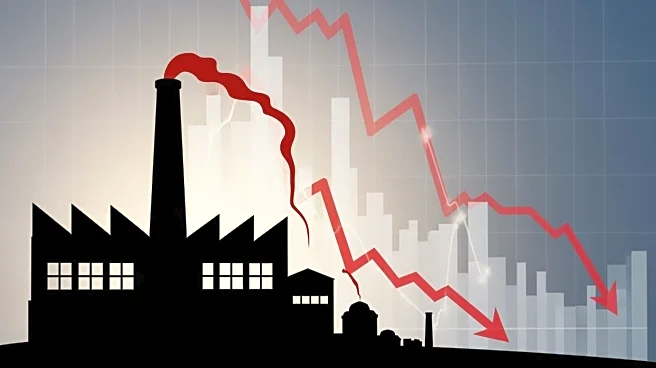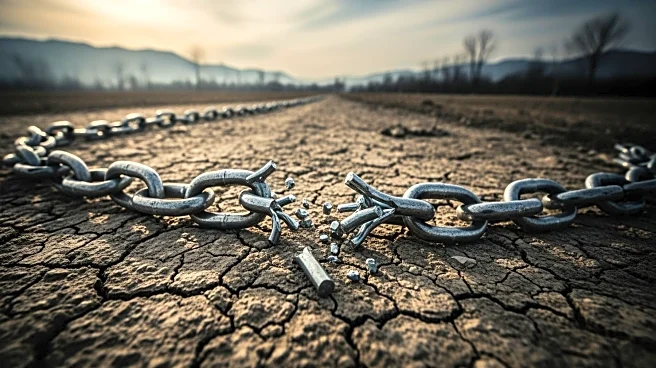What's Happening?
Pakistan's manufacturing sector is experiencing a significant downturn, with private investment plummeting by 46% over the past six years. This decline has raised concerns among economists and industry experts about the long-term viability of the sector.
The drop in investment from PKR 706 billion in FY2018-19 to PKR 377 billion in FY2024-25 marks the weakest phase of industrial growth in over a decade. Experts warn that without structural reforms aimed at enhancing productivity and competitiveness, the sector could face prolonged stagnation.
Why It's Important?
The decline in Pakistan's manufacturing sector is a critical issue that could have far-reaching implications for the country's economy. The sector's downturn threatens to undermine exports, employment, and overall economic resilience. High energy costs, policy inconsistency, and volatile currency movements have exacerbated the situation, affecting key export-oriented industries such as textiles and engineering goods. The lack of investment not only hampers growth but also risks the erosion of the country's industrial base, which is vital for economic stability and development.
What's Next?
To address the challenges facing its manufacturing sector, Pakistan needs to implement a credible industrial revival plan that ensures policy stability and encourages investment. This includes focusing on structural reforms that enhance productivity and competitiveness. Without such measures, the sector's decline is likely to continue, further impacting the country's economic prospects. The government and industry stakeholders must collaborate to create a conducive environment for growth and innovation, which is essential for reversing the current trend.














